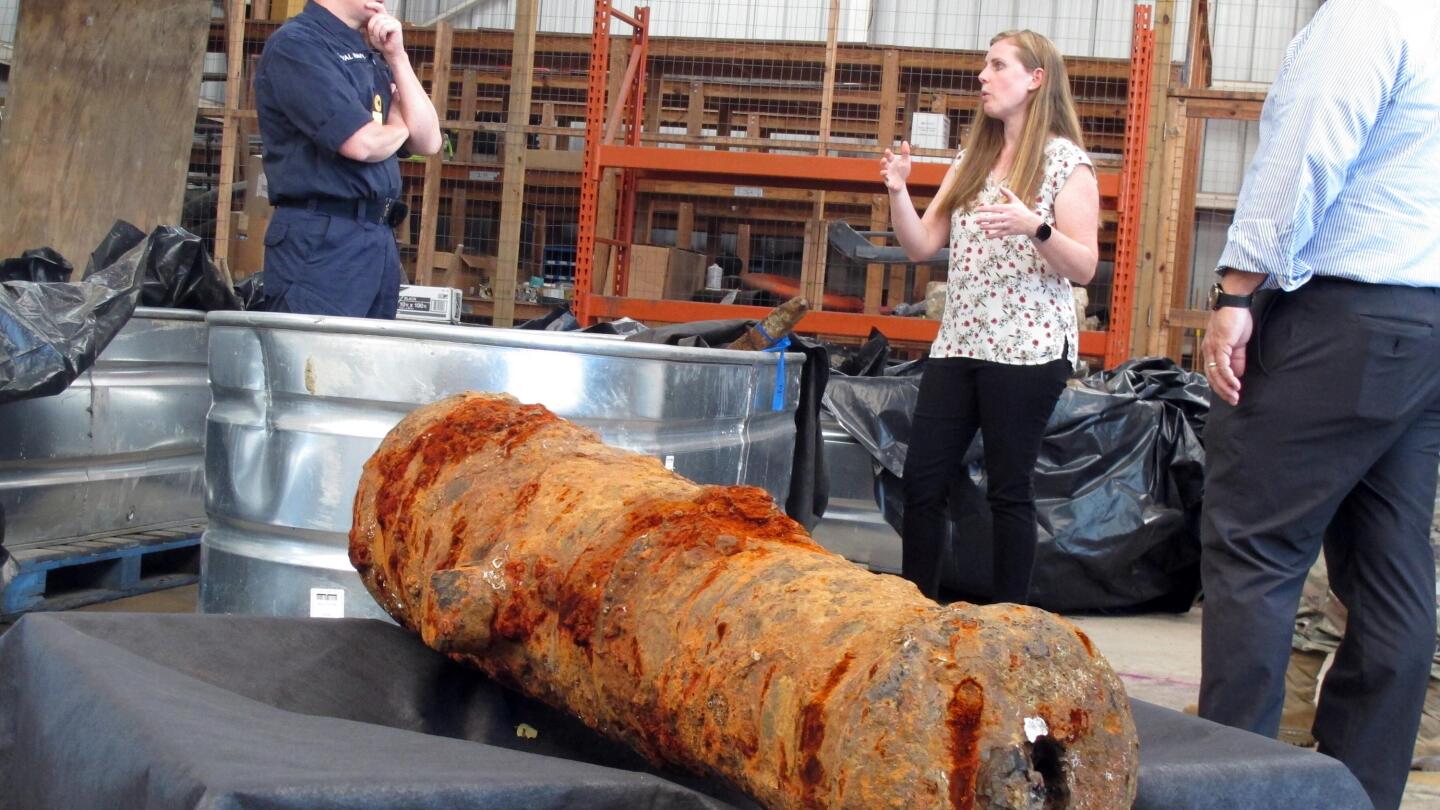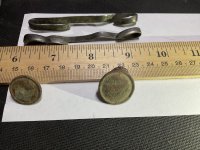- Feb 2, 2013
- 1,421
- 1,983
- Detector(s) used
- Many
- Primary Interest:
- All Treasure Hunting
Nearly 20 cannons found in a Georgia river are believed by archeologists to be from British ships from the time of the American War of Independence.
During an excavation job, workers uncovered 19 cannons that researchers believe to have been sitting at the bottom of the Savannah River, in Savannah, Georgia, for roughly 240 years. Experts believe that the cannons ended up on the river bottom after the ships were scuttled by the British around 1779.
“The mud- and rust-encrusted guns were discovered by accident. A dredge scooping sediment from the riverbed last year as part of a $973 million deepening of Savannah’s busy shipping channel surfaced with one the cannons clasped in its metal jaws. The crew soon dug up two more,” the Associated Press reported.
Historians note that before the siege of Savannah in 1779, it is likely that the British scuttled the ships with the cannons onboard around the time of the battle, which would last from September 16 to October 18 1779.
After closer examination of the cannons, historians ruled out that they were Confederate, which was the initial assumption, and then determined that they likely dated back to the Revolutionary War.
“They’re in remarkably good shape,” Army Corps of Engineers archeologist Andrea Farmer said. “Many were buried in clay and covered by silt and debris that kind of protected them.”
Each of the cannons has been moved to a warehouse by the river over the past year, as archeologists work with officials from Georgia, the U.S. government, and Britain to create a display, with the Savannah History Museum being the likely final destination.
Logistics are complicated by the question of who actually owns the cannons, whether it be the U.S. or Britain, which is still in contention.
“Everybody wants to keep the artifacts in Savannah,” Farmer explained, “because that makes the most sense.”
Farmer noted that, while researchers are confident that the cannons come from the war of independence, they still need official verification. Part of the verification includes examining other artifacts found in the river, including shards of a ship’s bell and anchor, to make the final determination.
Historians say several of the cannons were likely made in France and ended up on two British ships, the HMS Venus and the HMS Savannah. They also explained why the British might scuttle their own ships.
To prevent French ships from gaining access to the Savannah in 1779, the British scuttled several of their own ships to block up the river. “The land battle that followed was one of the bloodiest of the war. British forces killed nearly 300 colonial fighters and their allies, while wounding hundreds more,” the Associated Press explained.
The cannons are not the first artifacts from American history to be found in the Savannah River. Back in 2015, a Confederate ironclad ship, the CSS Georgia was pulled out of the water by Navy divers. Prior to its removal, the Confederate ship had been underwater for 150 years.

 apnews.com
apnews.com
During an excavation job, workers uncovered 19 cannons that researchers believe to have been sitting at the bottom of the Savannah River, in Savannah, Georgia, for roughly 240 years. Experts believe that the cannons ended up on the river bottom after the ships were scuttled by the British around 1779.
“The mud- and rust-encrusted guns were discovered by accident. A dredge scooping sediment from the riverbed last year as part of a $973 million deepening of Savannah’s busy shipping channel surfaced with one the cannons clasped in its metal jaws. The crew soon dug up two more,” the Associated Press reported.
Historians note that before the siege of Savannah in 1779, it is likely that the British scuttled the ships with the cannons onboard around the time of the battle, which would last from September 16 to October 18 1779.
After closer examination of the cannons, historians ruled out that they were Confederate, which was the initial assumption, and then determined that they likely dated back to the Revolutionary War.
“They’re in remarkably good shape,” Army Corps of Engineers archeologist Andrea Farmer said. “Many were buried in clay and covered by silt and debris that kind of protected them.”
Each of the cannons has been moved to a warehouse by the river over the past year, as archeologists work with officials from Georgia, the U.S. government, and Britain to create a display, with the Savannah History Museum being the likely final destination.
Logistics are complicated by the question of who actually owns the cannons, whether it be the U.S. or Britain, which is still in contention.
“Everybody wants to keep the artifacts in Savannah,” Farmer explained, “because that makes the most sense.”
Farmer noted that, while researchers are confident that the cannons come from the war of independence, they still need official verification. Part of the verification includes examining other artifacts found in the river, including shards of a ship’s bell and anchor, to make the final determination.
Historians say several of the cannons were likely made in France and ended up on two British ships, the HMS Venus and the HMS Savannah. They also explained why the British might scuttle their own ships.
To prevent French ships from gaining access to the Savannah in 1779, the British scuttled several of their own ships to block up the river. “The land battle that followed was one of the bloodiest of the war. British forces killed nearly 300 colonial fighters and their allies, while wounding hundreds more,” the Associated Press explained.
The cannons are not the first artifacts from American history to be found in the Savannah River. Back in 2015, a Confederate ironclad ship, the CSS Georgia was pulled out of the water by Navy divers. Prior to its removal, the Confederate ship had been underwater for 150 years.

Revolutionary find: 19 cannons in river likely sunk in 1779
A warehouse in coastal Georgia is holding historical treasures that evidence suggests were lost for more than 240 years.




